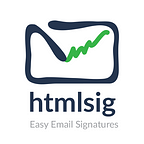How to Master Email Salutations and Sign Offs
A well-crafted email can lead to unlimited possibilities — from job interviews to future clients, there is no telling where they can lead. For that reason, good email etiquette is crucial. The lead-in and exit are equally important as far as leaving an impression. Many of the social platforms we use today are becoming increasingly informal, especially where character limits are enforced. However, the tried and true email has remained fairly consistent in regards to its purpose and wide-use.
For those wondering a bit more about email etiquette, here are ways to start and end your message.
Lead in with Hi, Hello, or Dear
There is a time and a place for the Heys and the Yo’s, but your email is not one of them. It is better to air on the side of professionalism when it comes to external and even internal communication. Save the shorthand salutations for friends, and remain more professional when emailing for work purposes. “Dear” may seem a bit old-fashioned, but it does the trick and sets a more formal tone. Whereas “Hi” and “Hello” have more friendly connotations while remaining polite, so depending on how you want to come across, choose from those three.
Add full name (if not on first-name basis)
For emails especially, it is best that you research your recipient and address them by name, rather than “to whom it may concern”. Your message should be directed at a specific person, and you will likely receive a response if you personalize it with his or her name. Now, thanks to LinkedIn and social media, information is at our fingertips, so do the research and find out the appropriate person to email and use their name.
Though there are some mixed reviews on this, many etiquette blogs still advocate using full names when addressing the recipient; for example, “Dear Ms. Anna Stowe” or “Hello Ms. Anna Stowe”. Maybe the recipient will return the inquiry with a “hey there” but it’s best to keep things more formal when starting out. Don’t miss out on a lead by offending the recipient. Business etiquette coach, Barbara Pachter notes that your greeting really can influence your recipient’s perception of you.
Avoid Abbreviations, emoticons, AND ALL CAPS
Even in a time crunch, you don’t want your recipient to pick up on it. Language that is acceptable in text messages and social platforms is not always welcome in the email space. You want your recipient to take you seriously and using words like Gr8 or Thx; instead, express a degree of unprofessionalism. Along with nixing the abbreviations, stop using caps in any circumstance. CAPS ARE STRESSFUL TO READ and they come across as abrasive.
Though it can be tempting to tack on a smile emoticon at the beginning or end of your email, it may not be translating as well as you would hope. In fact, a new study says that adding smiley emoticons could actually have a negative impact on your perceived intelligence. Contrary to a smile in real life, smileys elicit a rather critical response. So think twice before adding emoticons or smileys to the head honchos in your field if you want to maintain a mature persona.
Always Sign Off!
Just like a phone conversation, you typically don’t just hang up when you finish your thought. A sign off is your conclusion where you close the loop. When it comes to language, there are a few ways to sign off but are not applicable in all circumstances. If you say “thank you,” make sure that there is something to be thankful for. As MayeCreate notes, you wouldn’t use “thanks” when emailing your resignation. So be cognizant of when certain sing-offs apply to different situations.
A “thank you for taking the time to review.” can be inserted before your closing, but ending with a thank you may not always be appropriate. Therefore, “Best wishes,” “best,” or “sincerely,” are typically pretty safe. As always, do not forget to add in your digital business card, otherwise known as your Htmlsig email signature.
